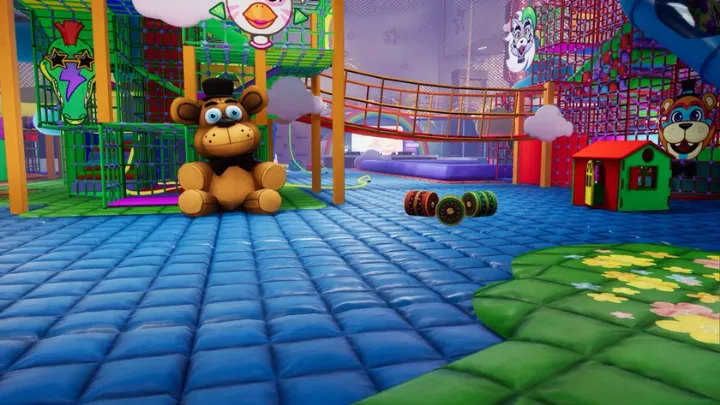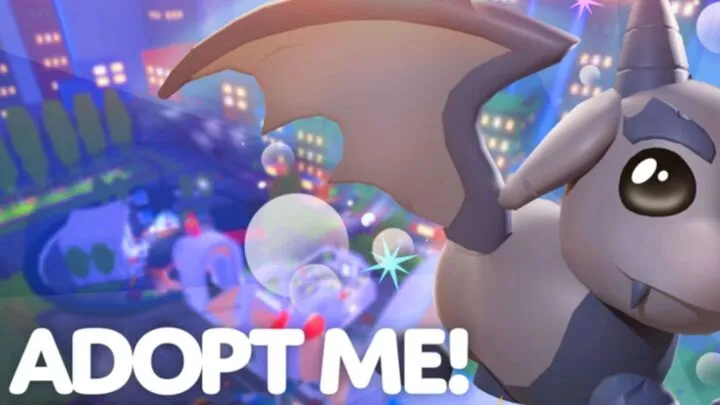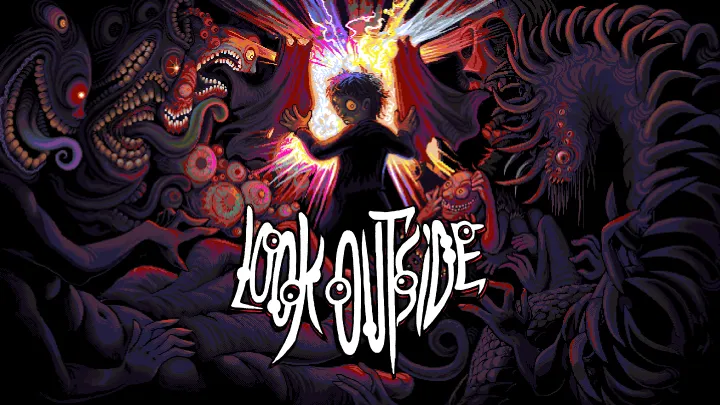Introduction
Welcome, aspiring night guard, to Freddy Fazbear's Pizza – a place of childhood wonder by day, and a labyrinth of animatronic terror by night. Five Nights at Freddy's (FNAF), created by the ingenious Scott Cawthon, isn't just a jump-scare simulator; it's a meticulously crafted survival horror experience that demands keen observation, strategic resource management, and nerves of steel. Your mission, should you choose to accept it, is to endure five harrowing nights from 12 AM to 6 AM, armed only with a flickering camera system, two office doors, and a precious, dwindling power supply. Many have tried, many have fallen, but with this comprehensive "How-To" guide, you will learn the secrets to outsmarting Freddy, Bonnie, Chica, and Foxy, and emerge victorious from the darkest corners of this peculiar pizzeria. Prepare yourself; the night is long, and the animatronics are restless.
Understanding Your Arena: The Office and Its Tools
Your humble office serves as both your sanctuary and your cage. It's a small, claustrophobic space, deliberately designed to instill a sense of vulnerability. Before delving into the terrifying dance with the animatronics, it's crucial to thoroughly understand your environment and the limited, yet vital, tools at your disposal. This knowledge forms the absolute bedrock of your survival strategy.
At the heart of your control panel lies the monitor for the security cameras. This device is your primary means of tracking the animatronics' movements throughout the restaurant. Mastering its use – knowing when to check, where to look, and what to look for – is paramount. To your left and right are two heavy steel doors, your last line of defense against the encroaching mechanical horrors. Each door has a corresponding light switch. These lights are not for illumination, but rather for quick, decisive checks of the blind spots immediately outside your office, revealing any animatronic lurking just beyond your field of vision. Critically, every single action you perform – raising the camera monitor, activating the door lights, and closing the doors – consumes power. Your limited power supply, displayed prominently on your screen, is the ticking clock of your demise. When it hits zero, all defenses fail, the lights go out, and only Freddy's sinister jingle and glowing eyes await. Learning to balance aggressive defense with stringent conservation is not merely a tactic; it is the very essence of survival in Freddy Fazbear's Pizza.
The Camera System: Your Digital Eyes and Strategic Hub
The camera system is more than just a surveillance tool; it’s your primary source of information, your early warning system, and often, your first line of defense. Becoming proficient with it means understanding its layout, its limitations, and critically, which cameras demand your constant attention. Ignoring it is tantamount to willingly walking into the animatronics' grasp.
The map displays various rooms, each with a camera feed. While it might seem intuitive to constantly cycle through all of them, this is a novice's mistake. Power drain from simply having the monitor up is significant, let alone frequently switching feeds. Instead, you must prioritize. The most vital cameras are those that track the animatronics' progression towards your office, and those that can delay specific threats. For instance, CAM 4B (West Hall Corner) and CAM 4A (West Hall) are crucial for Foxy. CAM 1C (Dining Area) and CAM 1B (Show Stage) are good for initial tracking, but quickly become less relevant as the night progresses. The "Show Stage" (CAM 1A) is where Freddy, Bonnie, and Chica begin. Observing them here allows you to note their initial departures. Remember, you cannot view animatronics once they are in the blind spots directly outside your doors (CAM 2A, CAM 3). That's what your door lights are for.
Key Camera Locations and Their Purpose:
- CAM 1A (Show Stage): Initial tracking of Freddy, Bonnie, and Chica. Note when they leave.
- CAM 1B (Dining Area): Bonnie and Chica pass through here.
- CAM 1C (Pirate Cove): Foxy's lair. Crucial for monitoring his three stages of emergence. Peeking into this camera is a specific strategy to manage Foxy.
- CAM 2A (West Hall): Bonnie's path. Watch for him here before he reaches your door.
- CAM 3 (East Hall): Chica's path. Watch for her here before she reaches your door.
- CAM 4B (West Hall Corner): Extremely important for Foxy. If he's here, close the left door immediately. Also a path for Bonnie.
- CAM 5 (Backstage): Bonnie often moves here. Less critical for direct threats.
- CAM 6 (Kitchen): Chica often moves here. This camera has only audio, no video, but her presence indicates she's close to your right side.
- CAM 7 (Restrooms): Chica often moves here. Less critical for direct threats.
 The "Stare-Down" Method for Freddy: A unique aspect of Freddy's movement is that he is generally deterred from moving if he is being actively watched on camera. This means if you see Freddy in a room and quickly switch to another camera, he is more likely to move. However, if you keep the camera focused on him, he tends to stay put for longer. This "stare-down" strategy is vital on later nights to control his progression, but it comes at the cost of continuous power drain from the monitor.
The "Stare-Down" Method for Freddy: A unique aspect of Freddy's movement is that he is generally deterred from moving if he is being actively watched on camera. This means if you see Freddy in a room and quickly switch to another camera, he is more likely to move. However, if you keep the camera focused on him, he tends to stay put for longer. This "stare-down" strategy is vital on later nights to control his progression, but it comes at the cost of continuous power drain from the monitor.
The Animatronics: Know Your Enemy, Anticipate Their Moves
Survival hinges on understanding the distinct behaviors of each animatronic. They are not mindless threats; they have patterns, tells, and specific vulnerabilities that, once learned, can be exploited. Each animatronic possesses a unique method of approach and a specific trigger for their jumpscare, making it imperative to differentiate between them and react accordingly.
At the core, the animatronics share a singular goal: to reach your office and end your shift. However, their methods vary significantly. Bonnie the Bunny and Chica the Chicken are the most straightforward, moving through the restaurant's halls to appear at your left and right doors, respectively. Foxy the Pirate Fox is a speed demon, rushing down the West Hall if not monitored properly. Freddy Fazbear, the titular character, is the most cunning and patient, slowly stalking you through the various rooms, often choosing to strike when your power is low or you are distracted. Understanding their individual mechanics allows you to develop a tailored defense for each. The key is not to react to their presence, but to anticipate their arrival and preemptively defend.
Bonnie and Chica: The Door-Slamming Duo
Bonnie and Chica are typically the first animatronics to become active, often starting as early as Night 1. They approach your office from opposite sides, demanding quick, decisive responses.
Bonnie the Bunny (Left Door): Bonnie is known for his aggressive and often unpredictable movements. He exclusively approaches the left door. You'll track him moving from the Show Stage, to the Dining Area, then sometimes to the Backstage, and finally through the West Hall (CAM 2A), until he reaches the blind spot directly outside your left door. His presence at your door is confirmed by seeing his silhouette in the left doorway when you flash the light, or by hearing a distinct set of heavy footsteps. If he's at your door, you must close it immediately. If you fail to do so, his jumpscare will trigger when you lower your monitor or, less commonly, when you turn off the light if he's already in the doorway. A unique characteristic of Bonnie is his ability to disable your left door light if he's close enough and you try to use it while he's not directly in the doorway. This signifies he's very near and you need to be cautious.
Chica the Chicken (Right Door): Chica mirrors Bonnie's aggression but takes the right side. Her path usually takes her from the Show Stage, through the Dining Area, sometimes to the Restrooms or Kitchen (CAM 6 – audio only!), and then finally through the East Hall (CAM 3) to your right door's blind spot. Similar to Bonnie, her presence is confirmed by her silhouette in the right doorway when you flash the light. You will also hear distinct kitchen noises if she is in the Kitchen (CAM 6). Close the right door immediately if she's there. Like Bonnie, failure to close the door will result in her jumpscare when you lower the monitor. Chica is generally perceived as slightly less aggressive than Bonnie, but equally lethal.
Key Strategies for Bonnie and Chica:
- Door Light Checks: Develop a quick rhythm: check left door light, close if necessary. Check right door light, close if necessary. Repeat.
- Audio Cues: Listen for the heavy footsteps or kitchen clatter.
- Camera Tracking: Keep an eye on CAM 2A (West Hall) for Bonnie and CAM 3 (East Hall) for Chica to anticipate their arrival, but don't rely solely on cameras once they are close to the office.
Foxy: The Speedy Pirate Fox
Foxy operates on a completely different mechanic than the other animatronics, making him a unique and often terrifying threat. He resides in Pirate Cove (CAM 1C) and will only move if he is not monitored frequently enough. This creates a delicate balance: check him too little, and he'll rush you; check him too much, and you'll drain power unnecessarily.
Foxy has three distinct stages of emergence from Pirate Cove:
- Stage 1: Peeking out from behind the curtain.
- Stage 2: Fully visible, standing outside the curtain.
- Stage 3: Gone from Pirate Cove, usually meaning he's already in the West Hall (CAM 4A or CAM 4B).
Once Foxy leaves Pirate Cove, he will move down the West Hall (CAM 4A) towards your office. You will hear very rapid, heavy footsteps approaching from the left. This is your cue to immediately close the left door, without checking the light. If you close the door in time, Foxy will bang on it, draining a significant amount of your power (1% to 5% per bang, varying by night). After banging, he will retreat back to Pirate Cove, resetting his process. If you fail to close the door, he will jumpscare you.
Foxy Management Strategies:
- The "Peeking" Method: The optimal strategy is to "peek" at Pirate Cove (CAM 1C) at regular intervals. A quick glance, every 5-10 seconds, is usually enough to reset his movement counter without excessive power drain. Don't stare!
- Audio Cues: His footsteps are very distinct and rapid. Learn to recognize them instantly.
- Visual Confirmation: After he bangs on the door, quickly check Pirate Cove (CAM 1C) to confirm he has returned before opening the door.
Freddy Fazbear: The Cunning and Patient Stalker
Freddy is the eponymous antagonist and often the most challenging to manage, especially on later nights. Unlike Bonnie and Chica, who are largely deterred by closed doors, Freddy has a more methodical and punishing approach. He primarily becomes active on Night 3, and a significant threat on Night 4 and 5.
Freddy moves slowly through the restaurant, almost exclusively on the right side, following a path from the Show Stage (CAM 1A) to the Dining Area (CAM 1B), then the Restrooms (CAM 7), the Kitchen (CAM 6 - audio only), and finally the East Hall (CAM 3). His presence in each room is often accompanied by a low, guttural laugh. If he is at your right door and you do not close it, he will not immediately jumpscare you like Bonnie or Chica. Instead, he will bypass the door, appearing in your office when you lower your monitor. At this point, it's game over.
Key Strategies for Freddy:
- Constant Monitoring (Later Nights): On Nights 4 and 5, you must keep an eye on Freddy. If he is being actively observed on any camera, his movement is significantly slowed or completely halted. This means quick flicks to the camera he is currently in are essential to keep him at bay.
- Audio Cues: Learn to recognize his distinctive laugh. This is your primary warning that he has moved to a new location, getting closer.
- Power Conservation is Critical: Managing Freddy's movement on later nights demands more camera time, directly impacting your power. This reinforces the need for extreme power efficiency elsewhere.
- Right Door Protocol: If Freddy reaches the blind spot outside your right door (signified by his laugh and the absence of Chica), you must close the right door immediately and keep it closed until he moves away. He does not appear in the door light like Chica.
 Power Management: The Lifeblood of Your Survival
Power Management: The Lifeblood of Your Survival
If the animatronics are the immediate threat, then your power supply is the silent, inevitable executioner. Every single action you take – checking cameras, using door lights, closing doors – consumes a portion of your limited power. Mastering power management is not just about being efficient; it's about developing a strategic rhythm that allows you to defend yourself while ensuring you have enough juice to last until 6 AM.
The power meter on your screen shows your remaining percentage and an estimate of how long it will last at your current consumption rate. This estimate can be misleading as consumption fluctuates wildly based on your actions. The goal is to reach 6 AM with any amount of power remaining. If your power hits 0%, all lights go out, doors open, and the fans stop. You are plunged into darkness, followed by Freddy Fazbear's iconic Toreador March, and then his inevitable jumpscare when the music fades. There is no recovery from 0% power; it is an instant loss condition, regardless of how close you were to 6 AM.
Tips for Stringent Power Conservation:
- Minimalist Camera Use: Avoid constant camera cycling. Only check necessary cameras (Pirate Cove, West/East Halls, Freddy's current location) for brief moments.
- Quick Door Light Checks: Flash the door lights for no more than half a second. Just long enough to see a silhouette or confirm absence.
- Strategic Door Closure: Only close doors when an animatronic is confirmed to be there. Do not keep doors closed unnecessarily, as this is a significant power drain. The only exception is on later nights when Freddy is at the right door, requiring the door to be held shut.
- Fan Control (Debatable): While the fan does consume power, it's generally a very minor drain. Some players turn it off in extreme situations, but the psychological relief it provides is often worth the minimal cost. Focus on the big power drains first.
The 4/20 Challenge: Power Conservation at its Finest Night 5, often referred to as the 4/20 Challenge due to the customizable difficulty screen, is where power management becomes an art form. The animatronics are at their most aggressive, requiring near-constant attention and defense, yet your power supply remains the same. This night demands a perfect balance of vigilance and frugality.
The "Door-Cycling" Technique: This is an advanced strategy, particularly useful on Night 5, for rapidly checking and securing both doors without excessive power drain.
- Raise the monitor, quickly check Pirate Cove (CAM 1C). Lower monitor.
- Immediately flash the left door light. If Bonnie is there, close the left door. Open it as soon as he leaves.
- Immediately flash the right door light. If Chica is there, close the right door. Open it as soon as she leaves.
- If Freddy's laugh is heard or he's tracked to the right door, close the right door and keep it closed until he moves away.
- Repeat this cycle. The key is speed and efficiency. Every millisecond counts.
Night-by-Night Strategy Guide: Adapting to Escalating Threats
The difficulty in Five Nights at Freddy's is progressive, with each night introducing new threats or significantly increasing the aggression of existing ones. What works on Night 1 will likely lead to failure on Night 4. This section outlines the strategic adaptations required for each of the five nights.
Understanding the animatronics' activation times and aggression levels is paramount. The game subtly guides you through the initial nights, allowing you to learn the mechanics, but by the final nights, it expects mastery. Your ability to anticipate the current night's primary threats and adjust your focus accordingly will determine your success. This isn't just about reacting; it's about proactively implementing the correct defensive protocols for the specific challenges each 12 AM brings.
Night 1: The Training Wheels
Night 1 is essentially a tutorial. Bonnie and Chica are moderately active, but their movements are slow and predictable. Foxy and Freddy are usually inactive, or at most, take very long to get going.
- Focus: Use this night to familiarize yourself with the camera system, the door lights, and the feel of closing the doors. Practice your reaction times to Bonnie and Chica.
- Power: Power drain is not a major concern. You can afford to be less efficient, but don't be wasteful.
- Goal: Learn the basic mechanics without significant pressure. If you can survive Night 1, you have a grasp of the fundamentals.
Night 2: Bonnie and Chica Get Aggressive
The animatronics wake up earlier and move faster. Bonnie and Chica will be much more persistent at your doors. Foxy might make a few appearances from Pirate Cove, so you need to start implementing the "peeking" strategy. Freddy remains mostly passive.
- Focus: Hone your door-checking routine for Bonnie and Chica. Begin consistent, brief checks on Pirate Cove.
- Power: Start thinking about power conservation. Avoid keeping doors closed unnecessarily.
- Goal: Successfully manage Bonnie, Chica, and introduce Foxy into your defensive rotation without running out of power too early.
Night 3: Foxy Joins the Hunt, Freddy Stirs
This is where the game significantly ramps up. Foxy becomes a major threat, requiring diligent monitoring. Freddy will also start moving, making his way through the right side of the restaurant. You'll hear his laugh, signaling his progress.
- Focus: Prioritize Foxy management (brief Pirate Cove checks). Begin tracking Freddy's movements via camera and audio cues. Bonnie and Chica are still aggressive, so don't neglect them.
- Power: Power management becomes critical. You'll be using the monitor more for Foxy and Freddy, so be very frugal with door lights.
- Goal: Juggle three active threats effectively, integrating Freddy's unique tracking into your routine while keeping Foxy at bay.
Night 4: Freddy Comes Out to Play
Night 4 is often considered a major difficulty spike. All animatronics are highly aggressive. Freddy is now a constant, significant threat, requiring regular camera checks to deter him. Foxy will rush much faster. Bonnie and Chica are relentless.
- Focus: Your primary challenge is Freddy. You must frequently check the camera he is currently occupying to keep him from moving. This means less time for other cameras and more power drain. Maintain constant vigilance on Pirate Cove.
- Power: Power conservation must be extremely disciplined. Every decision about using lights or closing doors needs to be precise and justified.
- Goal: Master the delicate balance of tracking Freddy, managing Foxy, and rapid door checks for Bonnie and Chica, all while stretching your power.
Night 5: The Ultimate Test (4/20 Challenge)
This is the ultimate test of your skills. All animatronics are at their maximum aggression, moving very quickly and frequently. Freddy is extremely active and will reach your door swiftly if not continuously monitored. Foxy is relentless. Bonnie and Chica will appear at your doors almost constantly.
- Focus: This night demands perfection. Implement the "Door-Cycling" technique to save power. Your camera usage must be ultra-efficient for Foxy and Freddy. Prioritize stopping Freddy on camera.
- Power: You will be cutting it extremely close. Aim for absolute minimal power usage. Even half a second extra on a light can mean failure.
- Goal: Survive by executing all learned strategies flawlessly, making no mistakes in power management or threat assessment. This is a true trial of endurance and precision.
The Hallucinations and Easter Eggs: More Than Just Scares
Beyond the immediate threat of the animatronics, Five Nights at Freddy's is rich with subtle psychological horror elements, including hallucinations and enigmatic Easter eggs that hint at the game's deeper, darker lore. These elements serve to heighten the tension, disorient the player, and fuel the vast fan theories surrounding the franchise.
The hallucinations are visual or auditory distortions that occur randomly, often as the night progresses or when specific conditions are met. These are not direct threats to your survival but are designed to induce panic and doubt. Examples include:
- "IT'S ME": This cryptic message can flash on screen, often appearing in conjunction with a close-up of Freddy's face or the poster in the East Hall. It’s a recurring motif linked to the game's lore.
- Animatronic Faces: Distorted, close-up images of Bonnie or Freddy's face can flash on screen, often accompanied by a low, unsettling sound.
- Shadow Bonnie: A rare hallucination where a shadowy, dark version of Bonnie briefly appears in your office before vanishing.
- Flickering Lights: Your office lights may flicker erratically, adding to the sense of unease.
These elements, while not directly lethal, are intended to break your focus, make you question what's real, and contribute to the game's oppressive atmosphere. Recognizing them as harmless (in terms of direct gameplay) allows you to dismiss them and refocus on the immediate threats.
The Phone Guy: Your Only (Recorded) Ally
For the first few nights, you are not entirely alone. A pre-recorded message from your predecessor, affectionately known as "Phone Guy," plays at the start of each shift. He serves as an informal guide, offering snippets of advice, lore, and sometimes, incredibly unsettling insights into the nature of Freddy Fazbear's Pizza and its animatronic residents.
Phone Guy's messages are a crucial part of the game's narrative and provide invaluable, albeit sometimes vague, hints about gameplay. He explains the basic mechanics of the doors, lights, and cameras. More importantly, he gives you insight into the animatronics' behaviors: how they roam, the importance of "keeping an eye on them," and even specific warnings about Foxy's speed. His calm, almost detached tone in the face of the horrors he describes adds to the eerie atmosphere. On Night 4, his message takes a chilling turn, strongly implying his own demise at the hands of the animatronics, leaving you truly alone for the final, most brutal night. Paying close attention to his early messages can give new players a significant advantage in understanding the fundamental rules of survival.
The Golden Freddy Glitch: A Secret to Uncover
Golden Freddy is one of the most enigmatic and terrifying secrets in Five Nights at Freddy's. He is not a regular animatronic, but rather a rare, spectral hallucination that can appear under specific circumstances, often signifying a momentary glitch in the game's fabric. Encountering him requires a very specific and quick response to avoid an instant game over.
Golden Freddy appears as a slumped, yellow version of Freddy Fazbear, slouched in your office chair or sometimes appearing on posters. His appearance is usually triggered randomly after you see a poster in the West Hall (CAM 2A or 2B) change to a distorted image of his face. Once seen, he will appear in your office. The screen will become distorted, and a low, garbled sound will play. If you do not react correctly, he will jumpscare you, resulting in an instant game over. The correct response is to immediately raise and lower your camera monitor. This will make Golden Freddy disappear, allowing you to continue your night. Do not try to close doors or flash lights; only raising and lowering the monitor works. Failing to do so quickly enough will lead to an unpreventable jumpscare. His presence is a deep dive into the lore, often linked to the "fifth victim" or other supernatural elements within the Freddy Fazbear universe.
The Mind Games: Psychological Warfare and Maintaining Composure
Beyond the tangible threats, FNAF is a masterclass in psychological horror. The limited visibility, the flickering lights, the oppressive silence punctuated by unsettling sounds, and the constant awareness of dwindling power all work to erode your composure. Surviving is as much about managing your own fear and anxiety as it is about managing the animatronics.
The game is designed to play on primal fears: helplessness, the unknown, and the feeling of being hunted. The jump scares, while effective, are only the payoff; the true horror lies in the build-up. The key to maintaining composure is to understand that the game is beatable through logic and strategy, not through panic. Recognize the distinct audio cues, trust your observations, and stick to your established defensive routine. Don't let the hallucinations or the eerie atmosphere break your focus. A calm, methodical approach is your greatest weapon against the psychological assault. When you hear footsteps, identify whose footsteps they are. When you see a shadow, determine what it means. Rationalizing the threats allows you to act decisively, rather than succumbing to fear.
Conclusion
Surviving Five Nights at Freddy's is a monumental challenge, a true test of observation, decision-making under pressure, and relentless power management. From the first hesitant clicks of the camera on Night 1 to the frantic, precise maneuvers required on Night 5, every moment in Freddy Fazbear's Pizza is a battle for survival. You've learned about the distinct behaviors of Bonnie, Chica, Foxy, and Freddy, understood the critical role of your limited power supply, and gained insight into the hidden layers of lore and psychological tactics the game employs.
The path to victory is paved with vigilance, efficiency, and an unwavering commitment to your defensive routine. Remember to conserve power at all costs, recognize the unique tells of each animatronic, and never let fear cloud your judgment. The nights are long, and the animatronics are always watching, but with the comprehensive strategies outlined in this guide, you are now equipped to face the horrors that lurk within Freddy Fazbear's Pizza. Good luck, night guard. You'll need it.

















